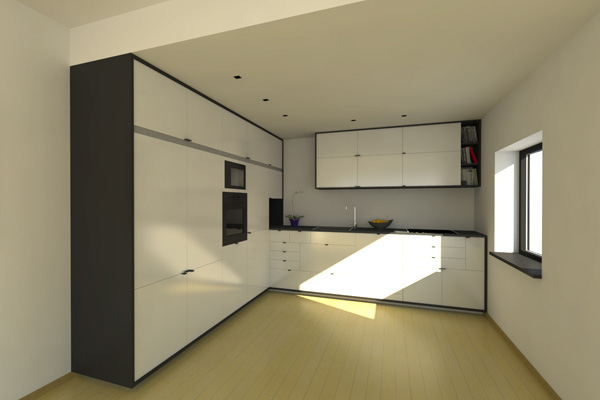For VRay buffs: a mammoth guide just released in English
-
-
and for people who would rather not open book or spend money theres an online free version: http://www.spot3d.com/vray/help/VRayHelp150beta/
-
Thanks for the info Edson! I think I like to see it on my desk!
-
@unknownuser said:
and for people who would rather not open book or spend money theres an online free version: http://www.spot3d.com/vray/help/VRayHelp150beta/
free agent,
i am afraid this is not the same thing. your link takes one to the official guide to VRay. my link relates to a book recently published on VRay by an enthusiast. what would be the point of selling something for € 130 and offering it online for free at the same time? -
sorry thought it was a manual
-
€130 seems excessive, but then again I've been looking for something like this. I would love to hear feedback about how well everything is explained. I've used the official V-Ray videos, which showed me the basics, but there were too many lines like -
"lets just ignore that feature"
"set this to, I don't know, 0.001, and this to 8000" without proper explanation of what differences each value actually makes.I've been playing with V-Ray (for autodesk viz mainly) and while you can use trial and error, there are just so many little settings/features that it's hard to know what's going to effect your render, with regards to quality, and with regards to speed.
One for the Christmas list I think!
-
It says in the description that this book weighs 3.1kg (nearly 7lbs)! Did someone say "overkill"?
-
for su vray the killing part is the time of rendering the only thing i want out of this manual is the proper setup or setting i would adjust to make the rendering time faster than the usual.. how came the studio max of autodesk can produce high quality renderings in minuites.. ithink our beloved su+vray also can perform and i need help and so i need to spend money for this manual..
-
thank you very much, Jackson. this was a great summary of what to keep in mind when using Vray. loads of good tips.

you should write a manual!
-
Deathcould,
I'm surprised you're having problems with Vray for SU's speed- it's pretty much the fastest renderer there is, it knocks out interior daylit renders in 1/20th of the time that Vue does and 1/100th of the time that Maxwell takes! (yep, I know, it's not comparing like for like, but still). If you follow the tutorials in the standard VfSU manual and load it's bundled visopt settings and skp files you should be getting good results very fast. Other than that my top tips would be to avoid using Quasi-Monte Carlo engine for anything other than daylit interiors- it's way slower than Irradiance Map combined with Light Cache. If you are doing daylit interiors then combining the IM and QMC engines will get you very good results (95% as good as unbiased renderers). For beginners QMC pretty much runs without much messing about- once you get the hang of VfSU you can start increasing the subdivisions into the hundreds if you want but figures below 20 are good enough for most models. I almost always use IM as my primary engine and it is here that you can adjust balance speed vs. quality the most. The parameters that affect this the most are:
a) HSph Subdivs. This parameter probably has more effect on renders speed than anything else- it basically sets the amount of detail picked up in your final render- if you're having problems with moire patterns in distant textures or very small details are disappearing then set this parameter high- generally I use a maximum of 100 and a minimum of 25. 25 or less is enough for test renders and 50 usually enough for final renders. Very rarely I've pushed it up to 200 when particular textures are moireing really badly, e.g. dark brown bricks with white mortar.
b) Min and Max rates under "Basic Parameters"- I usually leave the Max rate at 0 as anything less affects quality too much and in general a min rate of -3 represents a good compromise between speed and quality. Pushing the Min rate below -3 will start reducing the quality and above -3 will start noticably slowing your renders down. Nevertheless optimum min and max rate parameters are governed by the model, textures and the choice of secondary engine so it's worth experimenting with them (at least the min rate) once you've got to grips with VfSU.
c) VfSU lights, Emitter and Transluscent materials- they slow renders down a LOT. There's no workaround, just keep their use to a minimum.
d) Don't model double-faced glass in SU (or if you must, put one face on a separate layer which you can switch off when you render). VfSU takes forever to calculate the refracted light bouncing around inside double-faced glass- just one window can cause your render to take 10 times longer.
Hope this helps,
JacksonEDIT: had to search about a bit to find it, but Nomeradona recently posted an excellent tips topic at the ASGvis forums which pretty much summed up most of the tricks for getting fast renders out of VfSU.
http://asgvis.com/index.php?option=com_smf&Itemid=90&topic=4656.msg24563#msg24563
The only bit I'd really disagree with is that he advises avoiding QMC altogether; more than half of my professional work is interior daylit renders and the QMC engine is absolutely necessary for quality renders of this type IMO. It's not as much of a time hog as you might think- the original of this render was 1200 x 800px and it took about 30 minutes on my laptop (specs in signature below). Could probably render a similar model in less time, but there's a long black grille above the fridge which moired really badly so I had to push the HSph Subdivs up.

Advertisement








